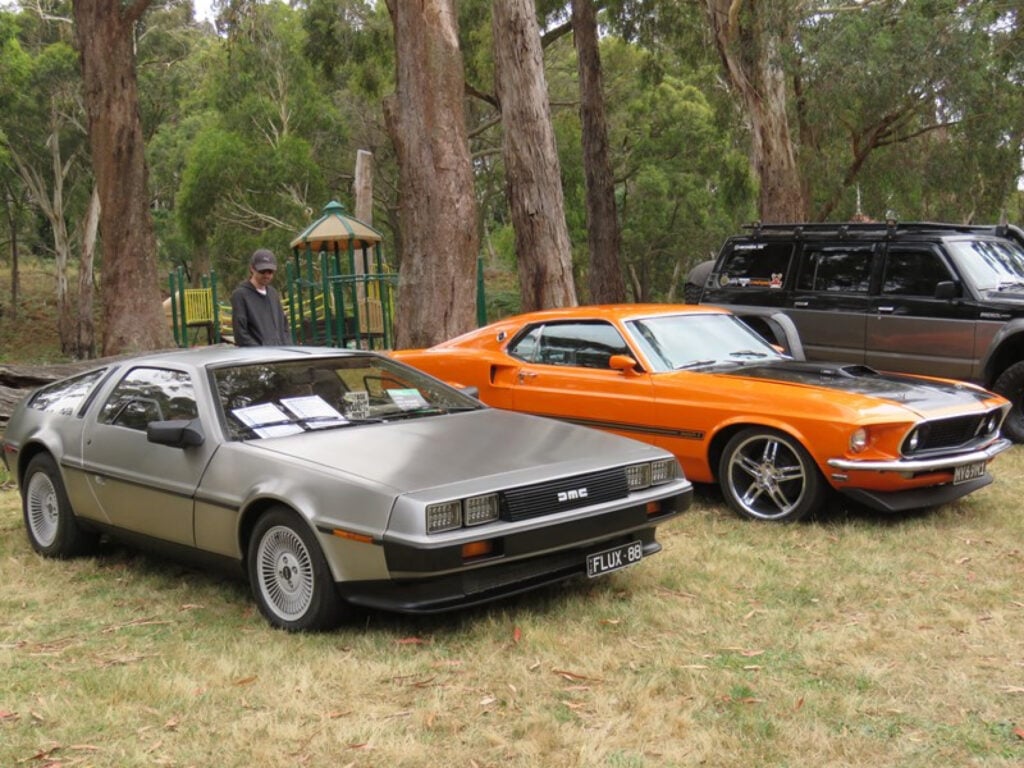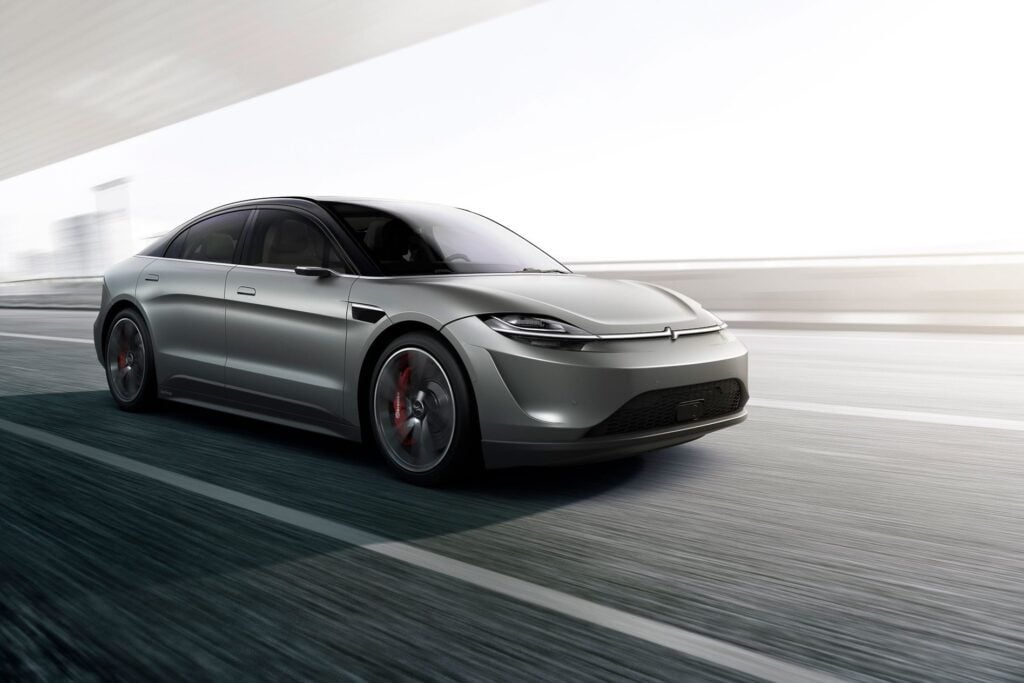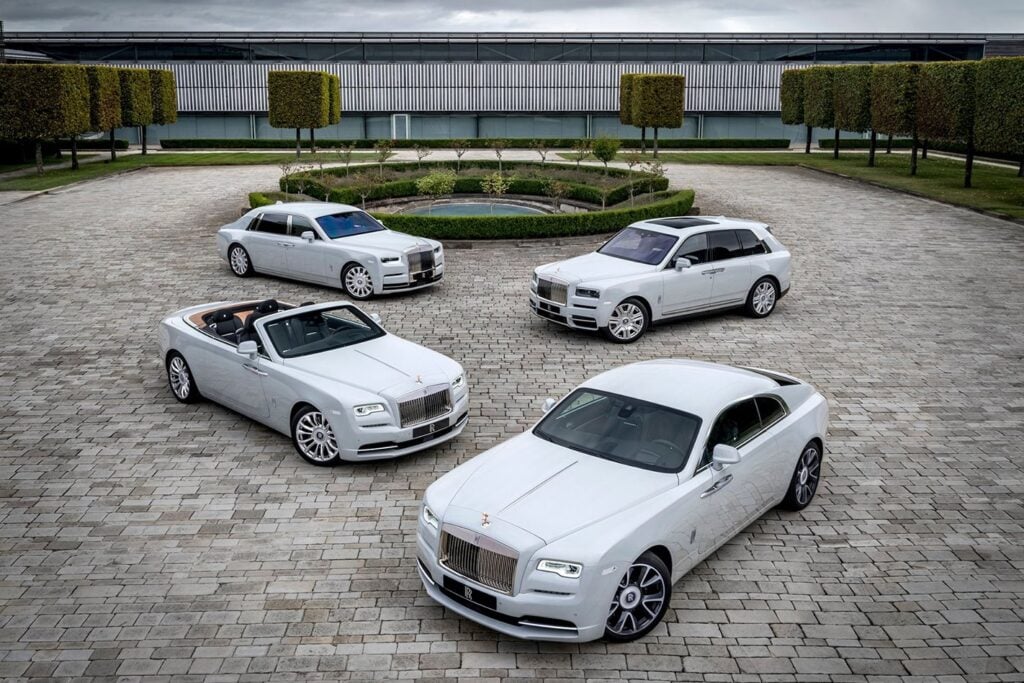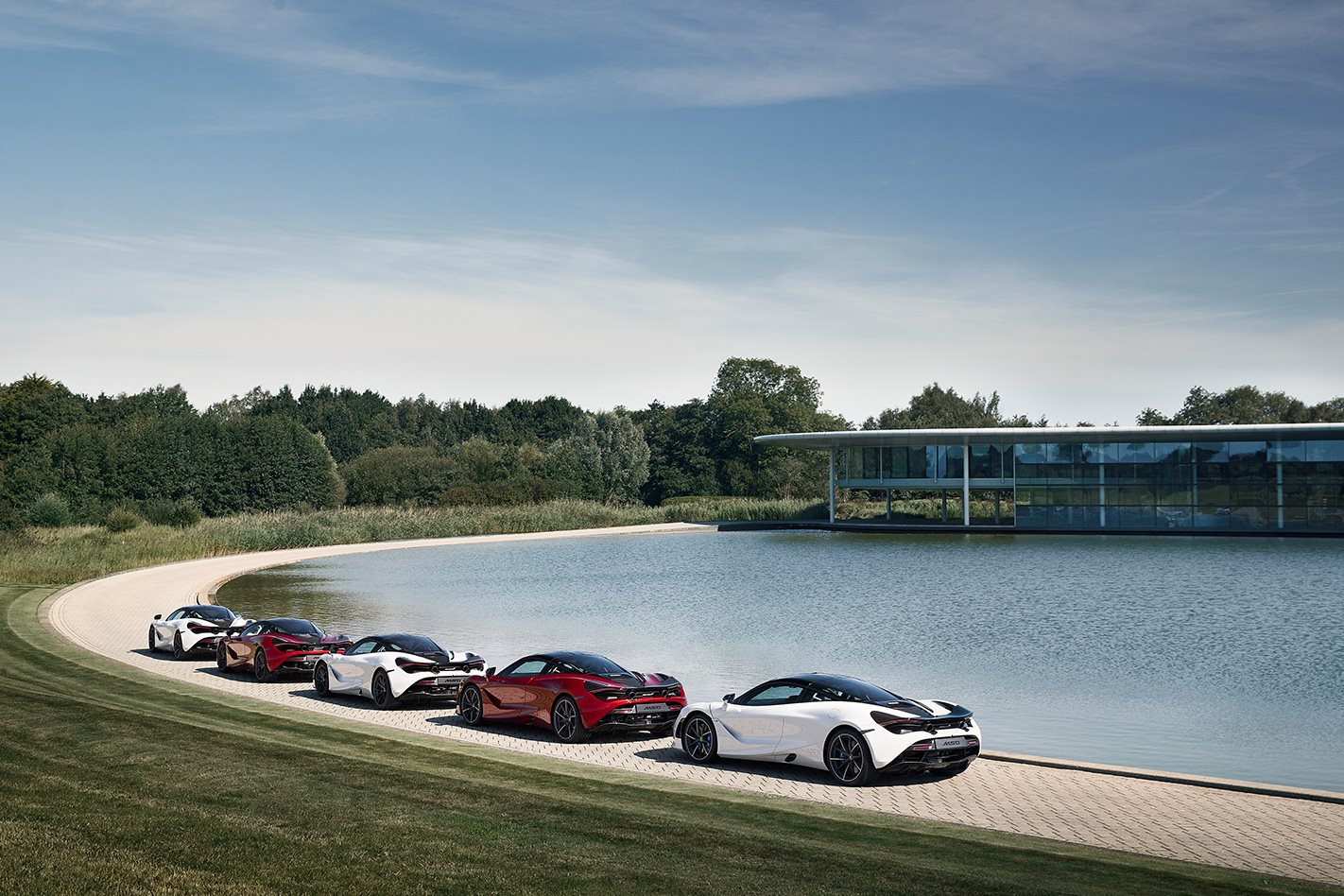
There’s something exhilarating and elusive about McLaren’s headquarters in Woking, England. Everything appears silver, serene and spy-like — although more thrilling “baddie” than prosaic “goodie”; a little more Blofeld than Bond, if you were. The long driveway arches around a man-made lake to reveal a curved, futuristic lair reminiscent of McLaren’s sleek swoosh emblem.

Massive doors mysteriously slide open exposing a façade of glass stretching the entirety of the building. Water from the lake is fed through heat exchangers to keep the building’s internal temperature at a static 21 degrees. I’m met by an impeccably dressed and impossibly polite tour guide, one of about 3,000 staff members who are employed in the multi-million-dollar workplace.
Winter sunlight floods the boulevard, which can only be described as a magnificent museum of motoring. Along this corridor are parked some of the most historically impressive vehicles in the company’s fleet, from Bruce McLaren’s Formula 1 racing car, the M7C, to Mika Häkkinen’s title-winning, historic MP4-13. It’s enough to send any revhead’s pulse racing.
Some of the many highlights include the most successful Formula 1 vehicle of all time — the MP4-4 driven by none other than Ayrton Senna. When my guide turns around I lightly touch the vehicle hoping I don’t set off some interloper alarm. I am not sure why I do this. Perhaps I’m hoping a fraction of the car’s greatness may rub off.
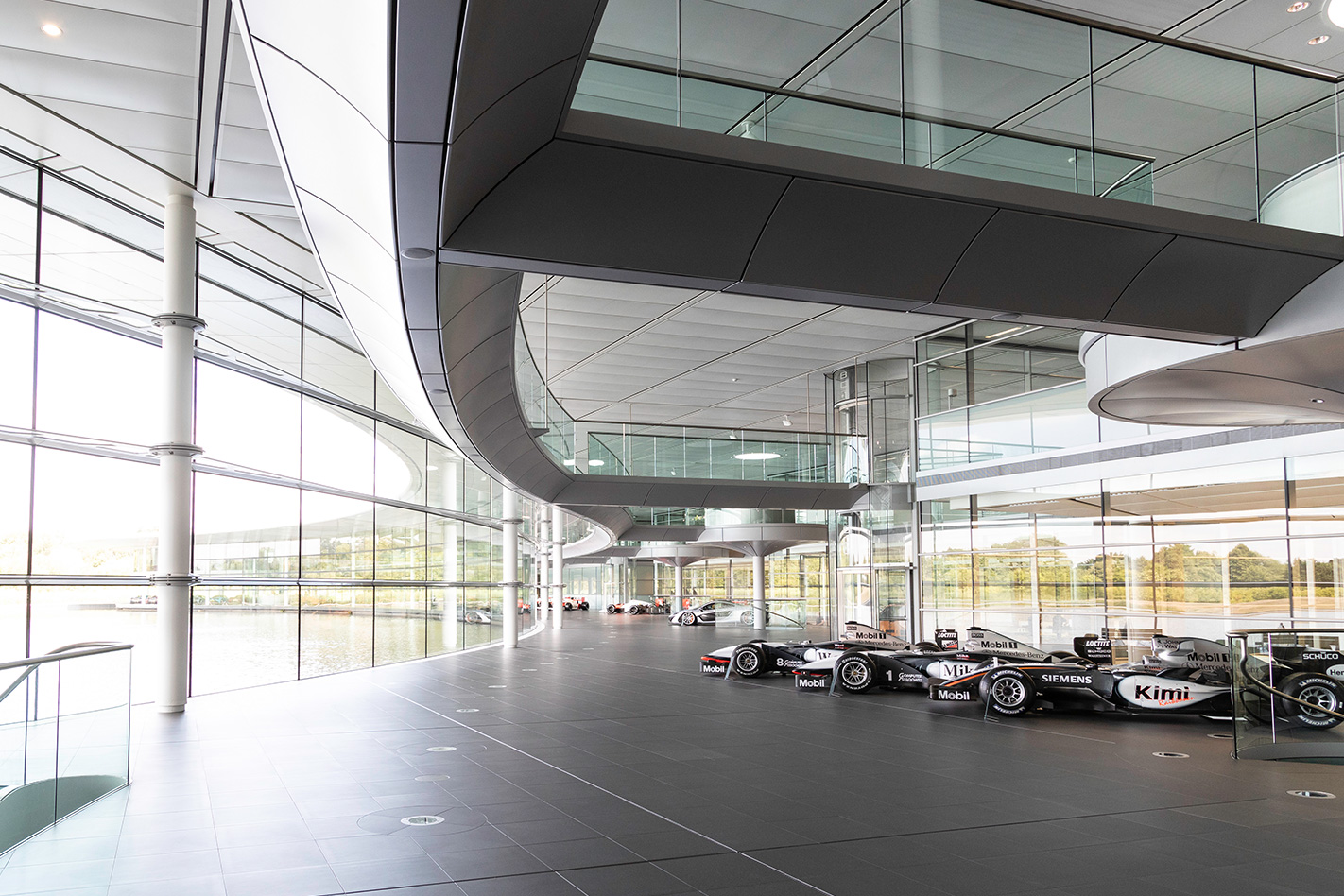
Another highlight is the 1993 deep green F1 XP5 test car — the fastest, naturally aspirated V12 ever. Its top speed? A blistering 386km/h.
An early P1, the first plug-in hybrid sports car to roll off the McLaren production line, is parked in front of the glass-fronted paint shop. Here you can view vehicles like the Senna, a limited-edition mid-engine sports car, receiving a coat. I spy some panels being painted the British supercar maker’s signature orange. Why this hue? It’s reported that in 1967 Bruce McLaren (the Kiwi racing driver after whom the company is named) wanted his cars to stand out from the pack and show up like beacons on colour TV. The shade stuck. In fact, McLaren’s latest Longtail release, the 765LT, was launched in Nardo Orange — a lobster pinky-orange version of the company’s favourite shade.
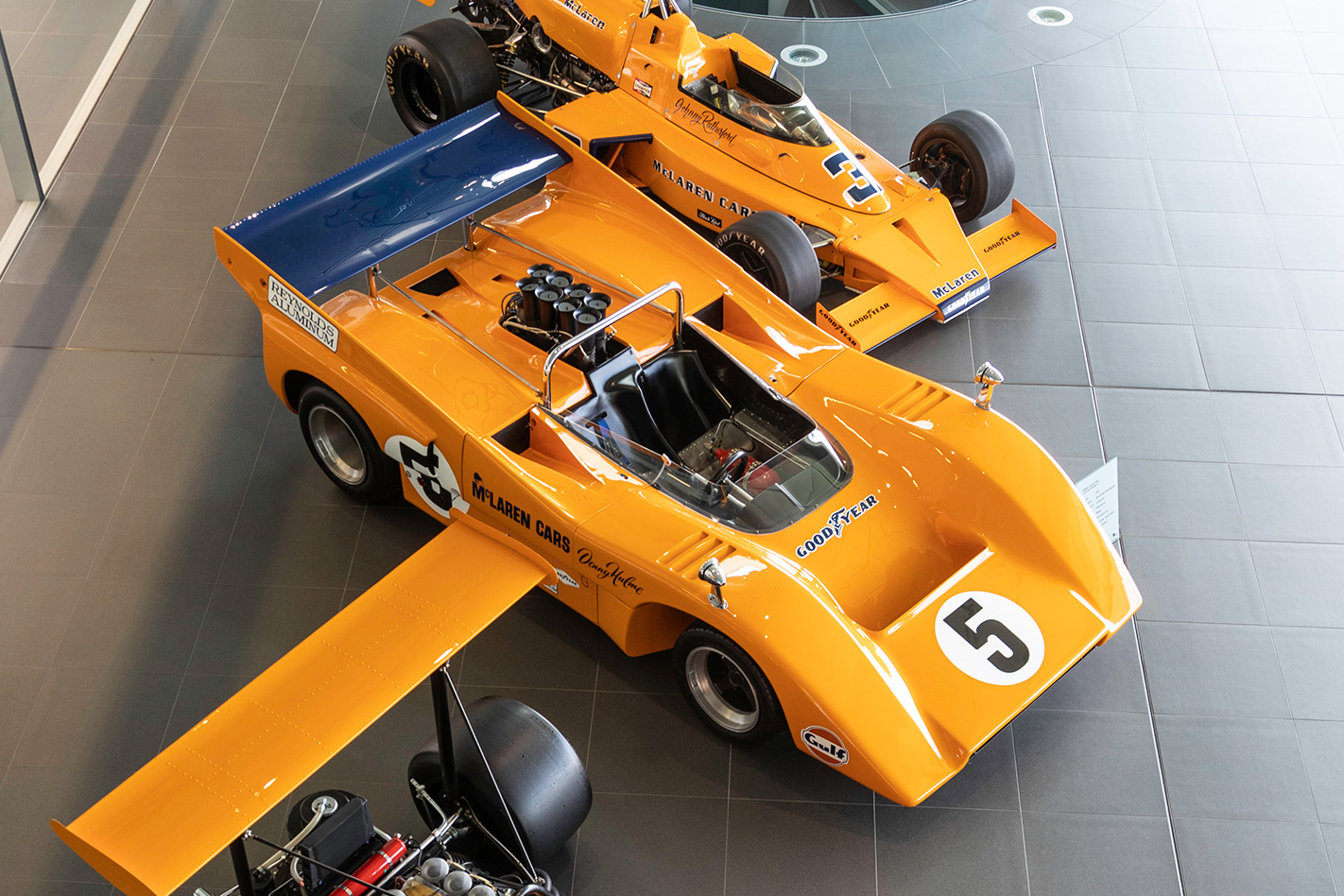
The boulevard narrows and I’m quickly ushered past the wind tunnel, which is used to help test aerodynamics and airflow. No filming allowed here. I’m then led through the trophy corridor. Reckon you have an impressive pool room stuffed with relics of your past victories? You ain’t seen nothing! The MTC boasts the biggest private collection of motor-racing trophies in the world. Interestingly, winning drivers don’t get to take home the silverware. Success is considered a team effort and, as such, all the bling belongs to McLaren.

After being blinded by all those spoils I reach a display for the “kidults” — as my daughter refers to kids trapped in adult bodies. Here sits a full-scale McLaren Senna made of Lego! Thirty workers toiled for more than 2700 hours to build the incredibly detailed model which features working sounds and lights.

From this point, the corridor takes a sharp left down to where the actual McLaren factory is located. Building on its racing nous, McLaren has produced high-performance sports cars since the early ‘90s. Here, in the facility’s heart, one is struck by the sound of silence. Neither robot nor production line is apparent, as on this bright, pristine factory floor, vehicles are painstakingly and lovingly hand-built. Each car is bespoke, composed and crafted for its customer like a work of art.
At the conclusion of my tour I’m handed the keys to a 2020 GT, McLaren’s first dedicated Grand Tourer, to test drive. I open the Burnished Copper dihedral door with a new-found respect, knowing these cars have been constructed with precision and passion. I may be driving a Grand Tourer — a car built, as the name suggests, for long cruises — but I feel every bit the bad-ass Bond Villainess. And it feels oh-so good.

